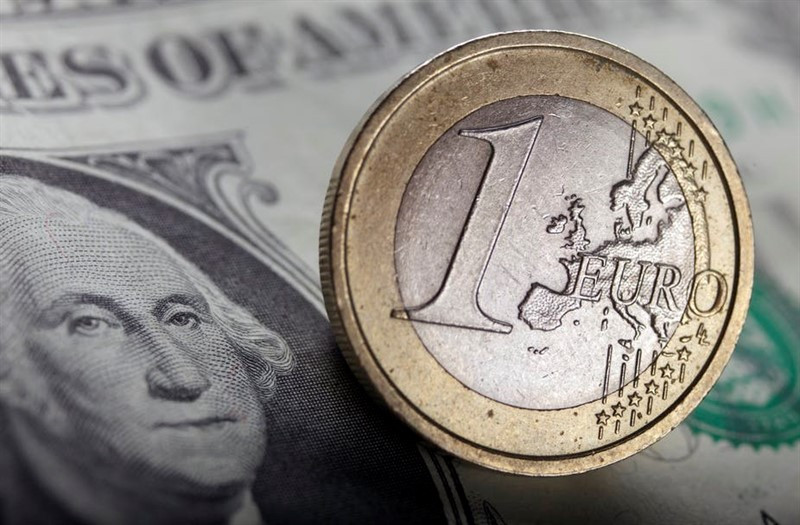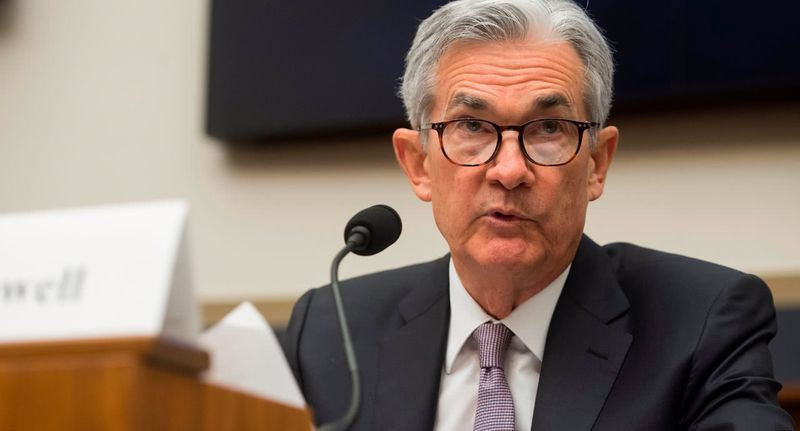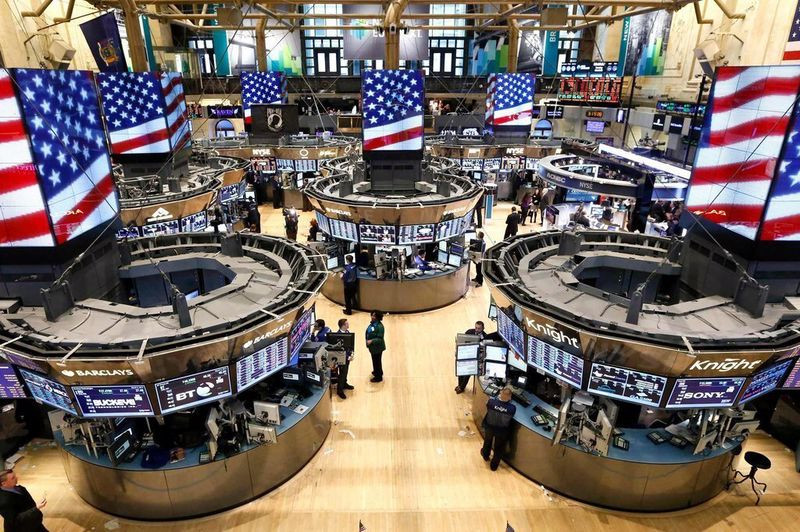
During the pandemic, the US stock market, represented by the S&P 500 index, increased by about 120% from the low of March 2020 to the high of January 2022.
During this period, stock investors even developed a reflex of buying on drawdowns, since fears of the consequences of the pandemic were offset by the fact that the US central bank and the federal government were lending a shoulder to the national economy, and through it to the markets.
"What cheap money has done is provide protection from bad news. But as this comfortable blanket is lifted, investors will be more vulnerable, and we suspect that this will create a more unstable environment for asset prices," Rabobank strategists noted.
Market participants were optimistic about entering 2022, believing that a strong US economy and further growth in corporate profits would keep stocks on an upward trajectory, even despite tightening monetary conditions in the United States.
Thanks to these expectations, on January 4, the S&P 500 index updated its record peaks at the level of 4818 points.
However, the next three weeks showed that there are more reasons for anxiety than for optimism. This resulted in the S&P 500 falling from record highs by more than 10%.
The wave of sales began with fears that the Federal Reserve, which decided to tame inflation, would become very aggressive.
The first alarm bell sounded on January 5, when the minutes from the December FOMC meeting were published, which showed investors that interest rates in the United States would soon rise.
Then, on January 11, speaking in Congress, Fed Chairman Jerome Powell stressed that the American economy no longer needs an accommodative policy and that the fight against inflation is a top priority for the central bank.
Member of the Board of Governors of the Federal Reserve Leil Brainard supported her boss, noting that inflation in the United States is too high and called its containment the most important task of the central bank. She also said that it would be right to start raising rates as soon as the bond purchase program is completed.
A number of Fed officials also spoke in favor of starting to raise rates in March, and St. Louis Fed President James Bullard said that four interest rate hikes may be required this year amid high inflation.
On the eve of the January FOMC meeting, investors still had a glimmer of hope that Powell will take into account the fall in stocks and soften his tone.
However, leaving the possibility for a larger and faster-than-expected increase in interest rates, Powell showed that the fall in stocks in itself causes less concern to the Fed leadership.

At a press conference, Powell acknowledged that inflation may remain high for longer than expected and that a rate hike at every FOMC meeting this year is not out of the question.
Against this background, US stocks quickly lost all gains for the day and closed in negative territory on Wednesday: the S&P 500 lost 0.15%.
The index also ended yesterday's trading with a decrease (by 0.54%) after the initial growth.
On Thursday, traders continued to evaluate the results of the January Fed meeting.
The range between the highest and lowest values of the indicators reached the day before was not as significant as in previous sessions this week, but continued to indicate the persistence of volatile market sentiment.
Initially, investors reacted positively to the report, which reflected the growth of American GDP at the highest pace in almost 40 years in the fourth quarter. However, subsequently, the S&P 500 index was again under pressure, including the realization that the impressive economic growth in the United States was caused by low interest rates, pent-up demand and a huge fiscal stimulus package of $1.9 trillion.
Judging by some signs, the growth rate of national GDP is already slowing down. According to the latest survey of purchasing managers, activity in the US service sector has fallen to an 18-month low. Retail sales in the country declined sharply in December. Consumer confidence is also at a low level. Although some events can be explained by the recent outbreak of Omicron, this may also indicate a decline in underlying demand.
In addition, there are fears that the easy money that supports stocks will be gradually withdrawn, and corporate profits will decrease on both sides – due to a slowdown in income growth amid a downturn in the economy, as well as due to an increase in wage costs.
The US stock market ends the current week on a minor note, and experts disagree about its future prospects.
While some analysts believe that the sell-off is nearing its final stage, others predict an even bigger drop in stocks.
Goldman Sachs analysts believe that it's time to buy, as after the decline in the prices of many stocks have reached attractive levels.

"Any further significant weakness in the S&P 500 index should be considered as a buying opportunity, from our point of view, although with moderate growth potential during the year as a whole," the bank's specialists said.
"The Fed will raise interest rates in 2022 to tame rising inflation, which is close to a 40-year high, but the central bank is likely to raise rates to a relatively low level," they added.
According to the forecast of Goldman Sachs, the S&P 500 index will grow to 5,000 points by the middle of the year, and by the end of the year it will rise to 5,100 points.
The sell-off on the US stock market is at the last stage, as investors' concerns about the federal funds rate hike and weak company profits are exaggerated, analysts at JPMorgan believe.
"If the stock market sell-off continues, the Fed could potentially change its policy to stop the fall. Easing expectations on the pace of interest rate hikes this year or delaying plans to reduce the Fed's balance sheet will help return investors' interest in risky assets," they said.
Following the results of the FOMC meeting and the press conference, Powell's futures market quickly put into quotes expectations of another, fifth, increase in the federal funds rate this year. This event triggered the decline of the S&P 500.
However, due to fears of a real collapse of the US stock market, the Fed will raise rates only three times this year, economists at Mizuho Bank believe.
Meanwhile, Morgan Stanley strategists claim that the correction in the US stock market is not over yet.
They predict that the S&P 500 index could fall another 10% from current levels and drop below 4,000 points over the next three to four weeks.
"Apparently, investors underestimate the consequences of tightening monetary policy in the United States, as well as the potential slowdown in economic growth in the country. Therefore, we recommend doubling the share of investments in protective assets before the upcoming correction in the market," the bank noted.
The flight from risky assets, provoked by the results of the January Fed meeting, led not only to the fall of the S&P 500, but to the rally of the US dollar against all major competitors.
Over the past week, the greenback has added about 1.8% to the euro, almost 2% to the antipodes, and the USD index has risen above 97 for the first time since July 2020.
"Powell made it clear that the increase in interest rates and the reduction of the balance sheet may occur faster than during the previous tightening cycle. We expect further growth of the dollar against the background of normalization of monetary policy in the United States, and the January FOMC meeting should give it an additional impetus," HSBC analysts said.
The US currency may well move to the next target in the 97.70–98.00 zone, beyond which there are practically no technical resistances up to the 100.00 mark, according to OCBC Bank.
It should be noted that the greenback did not start the current year well and initially defied the overwhelming consensus that it should strengthen, but then it was able to get up from its knees and is now close to showing the best week in the last seven months.
On Friday, the USD index updated 19-month highs in the area of 97.40-97.45, after which the bullish momentum weakened somewhat, but remains, which means that the markets continue to put more aggressive Fed rate hikes in quotes.
Some experts believe that after the "dust" settles down regarding the prospects for rates, the dollar rally will begin to run out of steam.
"The greenback is at cyclical highs, and it needs to move on, as the differential of interest rates and the increased level of market volatility provide support for the US currency. However, this is most likely the last stage of the USD movement," Societe Generale strategists said.
"There is a possibility that the global economy will come out of the worst period of the COVID-19 pandemic this year, and the market focus will shift to the normalization of monetary policy and growth outside the United States. In such a scenario, the best yield of the currency in the second half of this year will be obtained outside the world's largest economy," they added.
On Wednesday, Powell not only left the door open to raising rates faster than in previous cycles, but also warned that the balance sheet reduction would be significant.
However, the question arises: how much will inflation fall in response to the first rounds of policy tightening. And will that be enough?

If price pressure is able to ease quickly, the Fed's mood may turn out to be less hawkish, which will allow stocks to breathe a sigh of relief, and the greenback will be under pressure.
However, if aggressive efforts of the US central bank are required to reverse the price trend, the tone of its statements will be "belligerent", which may frighten the market and will increase expectations of further rate hikes, which in turn will support the dollar.
At the same time, it is difficult to predict the consequences that such sharp increases in interest rates and such powerful asset sales from the Fed's balance sheet will lead to.
A popular harbinger of a recession in the United States - the spread between 10- and 2-year government bonds - has fallen to a low since November 2020 mainly due to the fact that short-term yields jumped, and long-term yields barely moved places, hinting that some traders consider the position of the US central bank slightly reckless and begin to put the hawkish error of the Fed in quotes.
If a serious collapse in the US stock market begins, which will increase the risks of a sharp slowdown in economic growth in the country, the central bank will have no choice but to soften the rhetoric at some point.
There are some more good news that investors can cling to. Omicron may be the last wave of the pandemic. As it weakens, the problems in the labor market related to inflation may disappear.
All this will have a negative impact on the defensive greenback, but for now it is determined and strong enough to challenge his main competitors.
The rally of the US currency has already led to the fact that the EUR/USD pair has sunk to the levels it last visited in June 2020.
"The main currency pair collapsed as the market was forced to assess the risk that the Fed could implement a larger rate hike this year than initially expected. This happened after the announcement of the results of the January FOMC meeting and the press conference of Powell. Meanwhile, signals from key members of the ECB board of directors continue to indicate that the central bank intends to adjust monetary policy gradually, believing that inflation will be transient," analysts at Saxo Bank noted.
"If market expectations regarding central banks continue to grow in general, the ECB's capitulation in the context of the need to raise rates may be a turning point that will support the euro, however, this moment has not yet come. If longer-term yields in the US remain anchored, we will not necessarily see a rapid drop down. But in the future, either tightening by the Fed will bring down the markets, or the same shift in ECB policy will come," they added.
On Friday, the EUR/USD pair updated a 20-month low around 1.1125 before recovering to 1.1170.
Divergence in the rates of the ECB and the Fed is likely to limit the growth of EUR/USD and allow the pair to continue to decline, at least until the key ECB meeting in March, Westpac analysts say.
"The chart of the yield spreads of two-year US and European government bonds clearly reflects the direction of this divergence. It should persist unless the ECB announces the end of PEPP and revises policy and economic forecasts in March. The inability of the EUR/USD pair to settle above 1.1400 in January may cause testing of 1.1000-1.1050," they believe.
The jump in short-term rates in the US due to the hawkish position of the Fed has led the EUR/USD pair to new cycle lows, and it seems that the test of the 1.1000 level is only a matter of time, ING economists note.
"On the eve of the ECB meeting, which will be held next Thursday, the consumer price index in the eurozone for January will be released. The indicator is expected to reach 4.3% year-on-year, as some of the underlying effects will disappear. More clear signs that inflation peaked at 5% in December are unlikely to force the ECB to take a more aggressive stance. Since the European Central Bank does not support short-term interest rates in the eurozone, the EUR/USD pair will remain at the mercy of the Fed's policy tightening cycle," they said.
"The downward momentum in the euro was reinforced by the hawkish update of the Fed's policy. The head of the US central bank, J. Powell has opened the door for faster rate hikes than during the previous tightening cycle. Recent events confirm our forecast of a decline in the EUR/USD pair to 1,1000 in the first quarter. The downward pressure on the pair may increase in the near future if tensions between Russia and Ukraine increase. However, in the coming week, the bearish trend in the euro will be challenged if the ECB does not provide such strong resistance to expectations of an interest rate increase this year," MUFG Bank said.
The main currency pair has not yet managed to launch a convincing recovery, and it looks vulnerable due to the continuing divergence in the rates of the ECB and the Fed, which continues to support the outflow of capital from the eurozone. In this regard, attempts to increase EUR/USD can still be regarded as a convenient opportunity for short positions.
The initial resistance is at 1.1185. Its breakout may trigger a short squeeze, although growth may be stopped near the 1.1230 mark, which will be a key turning point for short-term traders. Its clean breakdown will lay the foundation for further recovery of the pair.
The nearest support is located around 1.1100, the breakdown of which will allow the bears to aim for 1.1050 and 1.1000.





















